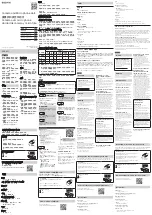
20
The
Download
button initiates the process of getting the images sequence from the
camera memory to the host computer memory. It only works after the camera is triggered
and video capture to camera memory is stopped (see preceding explanation of camera
states).
The images from the camera’s internal memory buffer will be stored as TIFF files. Each
frame is stored as a separate file that receives a unique name derived from the internal
time stamp. (
Figure 12
below). The files are named:
YYYY_MM_DD_hh_mm_ss_INDX.tif or
YYYY_MM_DD_hh_mm_ss_INDX_trigger.tif .
Where
YYYY
is the year,
MM
is the month (01-12),
DD
the day (01-31),
hh
is the hour,
mm
is the minute,
ss
is the second and
INDX
is the index of the image. The newest image
has index 0001 and will increase as the images get older. Note: the date and time reflects
the time that the image was written to the disk drive and not the time it was collected.
The essential video sequence information is also engraved at the bottom left corner of the
image. The time is a 32 bit quantity which is the number of microseconds since the camera
was turned on.
Figure 12, The frame sequence label
The filename for the frame captured at the trigger event has ‘trigger’ incorporated in the file
name to mark it.
Additional important information is also included in the tiff tags:
TIFFTAG_SOFTWARE = "FastViewer USB Application Version 3.0.1"
TIFFTAG_DOCUMENTNAME = the file name.
TIFFTAG_IMAGEDESCRIPTION = "Time Tick %d (usec)"
Application software can recover these values from the tags. In addition the files may be
renamed without loosing the original information in the names.
















































